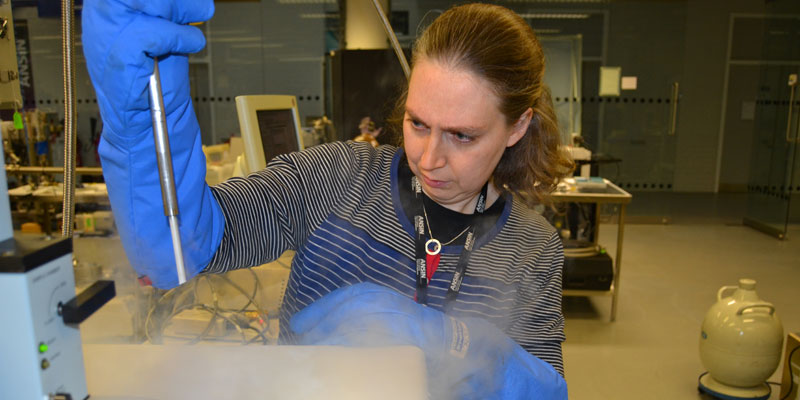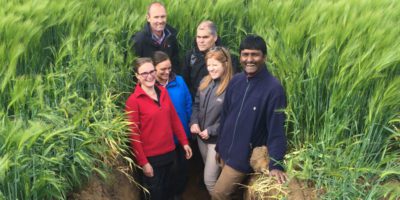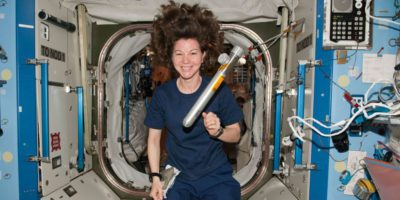Dr. Solveig Felton is a lecturer in the Centre for Nanostructured Media at Queen’s University, Belfast. Prior to this she was a lecturer in Electron Microscopy at Imperial College London, working in the Department of Materials, using transmission electron microscopy to study micromagnetic properties of materials. She studied at Uppsala University in Sweden including a six month research visit to the University of Glasgow.
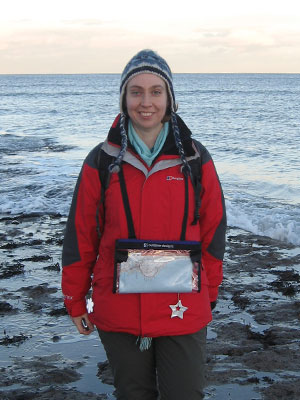
Solveig spoke at the Belfast Soapbox Science event on Saturday 20th June 2015. She talked about “Spin Ice: magnetism and frustration. Fascinating magnetic properties due to frustrated interactions.”
How I became a physicist
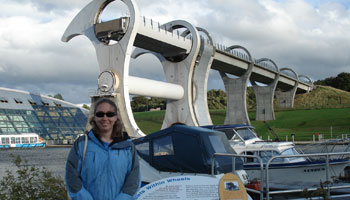
The start of my career path is a little unusual. When I first arrived at Uppsala University, it was actually to study history. The Swedish university system allows you two different ways of getting a degree: you can either take individual modules in different subjects, earning a degree by fulfilling the requirement of a specific depth of study and total number of credits, which is what I was intending to do with the history, which I actually followed by a year of German.
The other way of getting a degree is to follow a specified degree pathway, which is much more like the UK system. After two years of humanities courses at university, I realised that I really missed the logic and sense of understanding that I get from the sciences. So I decided to start on an Engineering Master’s pathway in Materials Science. I choose this because it allowed me to do both physics and chemistry, and I am very pleased I did.
Attracted to studying magnetic materials
I did my master’s thesis project in the Solid State Physics group at Uppsala, in the area of magnetic materials, and I was hooked. Luckily for me, there were some Ph.D [Doctor of Philosophy] positions available in that group when I finished my master’s degree, and I got one of them.
The title of my thesis was “Tunable Magnetic Properties of Transition Metal Compounds”; the research that went into that was from two different projects. One was very fundamental studies of the magnetic properties of new chemical compounds in collaboration with two Ph.D. students in chemistry, who produced the samples.
The other was a more applied project where we were looking at micron sized ferromagnetic islands, and how they could be used to move small magnetic beads in a programmable way across a surface. I found it really interesting to have these two different aspects to my work, and I believe it has also been beneficial to my career.
During my Ph.D. studies, I also had the opportunity to spend six months as a visiting researcher in the Department of Physics at the University of Glasgow, learning how to use transmission electron microscopy to study micromagnetic structure.
Shine like a diamond: Studying ‘defects’ in diamonds
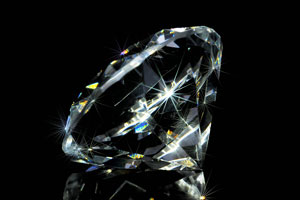
Defects don’t necessarily mean something bad. Defects can be crucial
To materials scientists, defects don’t necessarily mean something bad, rather it is a term used to describe disruptions of the infinite repetition of – in the case of diamond – carbon atoms bonded to carbon atoms. Indeed, point defects in the semiconductor silicon, which has the same structure as diamond, are crucial to their use in all the processors we use in everything from smart phones to pacemakers.
Why diamonds have so many fancy colours
In a similar way specific point defects in diamond have been suggested as possibilities for qubits, the information carriers in quantum computing. And on a more gemological front, point defects are the cause of many of the fancy colours diamonds can have.
I left Warwick in 2009, to take up another post-doctoral research position in the Department of Materials at Imperial College London. There I worked for a year and a half studying magnetic proprieties of thin films of organic materials, in the group of Dr. Sandrine Heutz, who took part in the very first Soapbox Science event in London in 2011.
During my time at Imperial, a temporary lectureship in electron microscopy was advertised in the Department of Materials, to set up – and use – the Titan transmission electron microscope to do magnetic imaging.
Career serendipity
Up until that point, I had thought of my time in Glasgow as a very exciting experience that had broaden my outlook on life, but mostly tangential in terms of my actual career. However, without that experience, I wouldn’t have even been able to apply for that job! And that temporary lecturer position gave me the chance to get teaching experience, as well as doing fun and interesting research.
This in turn, helped me get my current, permanent position as a lecturer in the School of Mathematics and Physics at Queen’s University Belfast.
My first and strongest female role model – my Mum
My first and strongest female role model is my mum. She wasn’t a scientist herself, but she always encouraged inquisitiveness in me and my brothers and sister. If we asked her questions she didn’t know the answer to, she helped us look them up in a variety of encyclopaedias and other books. She instilled a life-long love of books and learning in us all, as well as a persevering attitude.
Impossible is just a state of mind
I remember one time I complained about being set an impossible problem in maths, probably hoping that Mum would tell me that I could skip it. Instead she suggested that it might be hard, but was unlikely to be impossible, and that my issue might be in how I was attacking it. Once I looked at the problem from a different angle, it turned out that not only wasn’t it impossible, it wasn’t even particularly difficult!
Female scientific role models
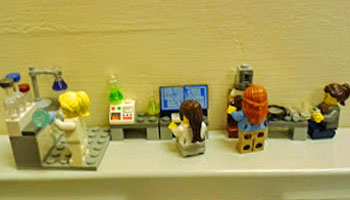
Female scientific role models arrived much later in my life. It wasn’t until the spring semester of my third year, of my four-and-a-half year engineering master’s degree that we had our first female lecturer. I remember her as one of the good ones; she managed to make corrosion interesting!
We had a couple more female lecturers in my fourth year, but the one that really inspired me was our male solid state physics lecturer which is why I decided to do my master’s project in solid state physics. During both my Ph.D. at Uppsala and my post doc at Warwick, all the academics in the groups I worked in were men, so it wasn’t until I went to Imperial that I had close contact with possible female scientific role models.
My boss during my post doc at Imperial, Dr. Sandrine Heutz, was an excellent role model. She encouraged me to apply for the temporary lectureship, and helped me by commenting on my application and giving me feedback on the presentation I had to make in the interview. The way she interacted with her group, and her engagement with outreach, for example taking part in the first ever Soapbox Science event in London in 2011, are also examples I am trying to follow.
Objectives in my current role and the research I undertake
As a lecturer in the School of Mathematics and Physics at Queen’s University Belfast, I am employed to undertake both teaching and research. This year, I have been teaching Solid State Physics to both our first year physics students and our third years. I am also the programme coordinator for a new online part-time master’s course in Materials Science for Innovative Engineering and have been teaching part of the module on Fundamentals of Materials Science for that.
When it comes to research my interests are in magnetic materials, as they have been since my master’s project over a decade ago. At the moment, I am working on a few different projects including looking at magnetic nanoparticles for possible cancer treatment in collaboration with Dr. Danai Poulidi in Chemical Engineering at Queens University Belfast and studying variations on artificial spin ice structures. The latter is a continuation of my work at Imperial College London, and what I will talk about at the Soapbox Science event in Belfast.
Gender stereotypes – the same the world over?
On my first day on the Engineering Master’s programme in Materials Science at Uppsala University, we were welcomed by the programme coordinator. The approximately 70 students starting that programme were all sitting in a lecture theatre and the female students were asked to stand up. I remember looking around at the ten or so of us, and thinking “There aren’t very many of us,” only to have the programme coordinator say, “Excellent! There are more of you this year!”
Just as in the UK, there is this stereotype in Sweden that physicist, and even more so engineers, are male. This isn’t true across the board of the STEM subjects though, with especially biology and chemistry seen as ‘female’ subjects. And among the veterinary students the gender distribution is almost identical to that in materials engineering, except with more women than men.
This fact was used by these two groups of students in Uppsala, to arrange joint parties with roughly equal participation from men and women. It is one of the ways I ended up at the same parties as my brother, when we were students, because he studied veterinary medicine.
Physics: Not about men in tweed jackets with leather patches on their elbows
I think one of the best ways to show girls (and people in general!) that physics and the other STEM subjects are not just about stuffy old men, is to give them examples of female physicists, scientists and engineers. This is one of the really exciting things about Soapbox Science to me – it shows that you can put together a line-up of ‘just’ women and get a great variety in different branches of science represented.
Events like this, where women talk about the research they are doing, will hopefully help inspire young girls – and boys – to see science and engineering as exciting fields of study, as well as challenge the perception that it is all done by men.
Avoiding the curse of low expections
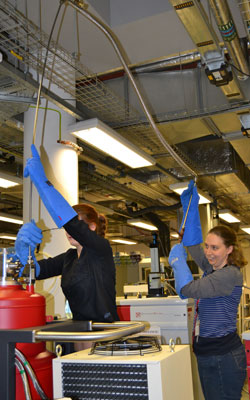
Equally important, I think we also need to stop holding girls back by the curse of low expectations. Like my Mum did when I was young, we need to tell our girls that while maths and science may be hard, they shouldn’t give up, and sometimes if they look at it a different way, they will find that maybe it wasn’t actually that difficult at all!
Girls certainly can do physics just as well as boys; if you persevere when you get stuck instead of giving up, you will find that the reward of understanding it at the end is well worth the hard work you might have had to put in to get there.
Applying for Soapbox Science
I heard about the Soapbox Science already in 2011, when my former boss Dr. Sandrine Heutz took part in the first ever event in London. She spoke well of the event, and I thought the idea was an interesting one. With this background, when my Ph.D. student Suzanne Gray forwarded the information about Soapbox Science here in Belfast, suggesting I apply, I decided to go for it.
I think engaging with the general public about science is an important duty of universities, both to spread the information about science and to show young people how much fun science can be. I will be talking about some of my research into a class of frustrated magnetic materials, called spin ices. They are called frustrated because the magnetic interactions between the moments that make up the material, can’t all be satisfied at the same time. This frustration leads to some exciting, and sometimes surprising properties!
#GirlsWithToys
Thanks to the generous sponsorship of the STFC [Science & Technology Facilities Council], I had great fun preparing for my session by ordering a variety of different magnetic educational tools, or as I usually say: Toys!
I am wanted to demonstrate frustration to my audience with the use of ordinary bar magnets, and to take this further to show how this frustration can give rise to a type of magnetic monopoles, despite the fact that every magnet, no matter how small is made up of a pair of south and north poles.
Expect the unexpected…
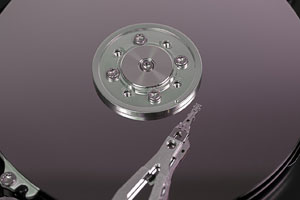
http://pure.qub.ac.uk/portal/en/persons/solveig-felton(17644080-db8c-4d1d-86ed-3f13963c5d78).html
https://twitter.com/queensubelfast
http://uk.linkedin.com/in/solveigfelton

